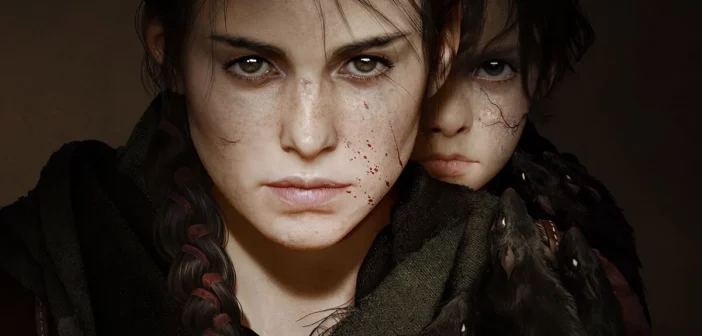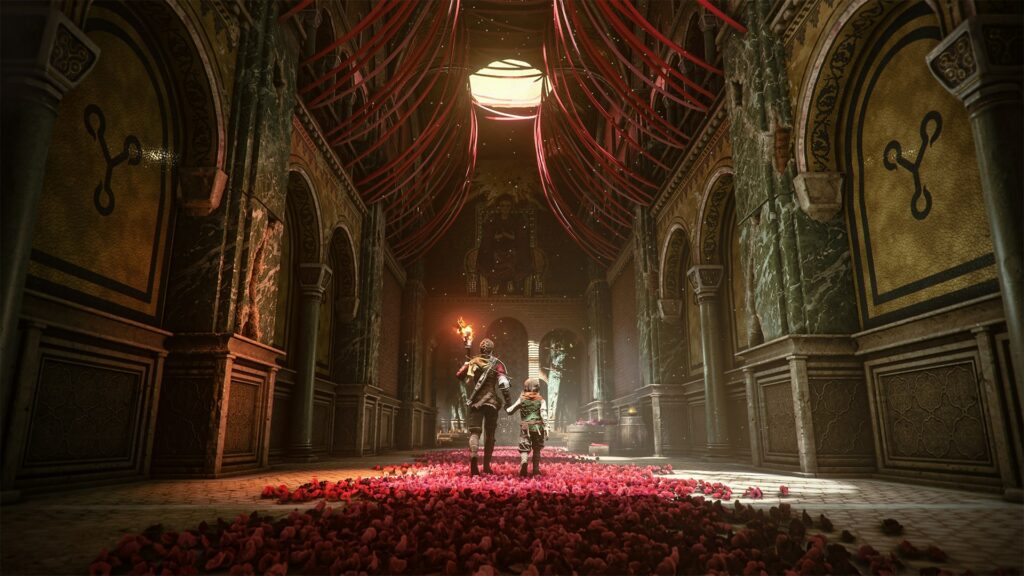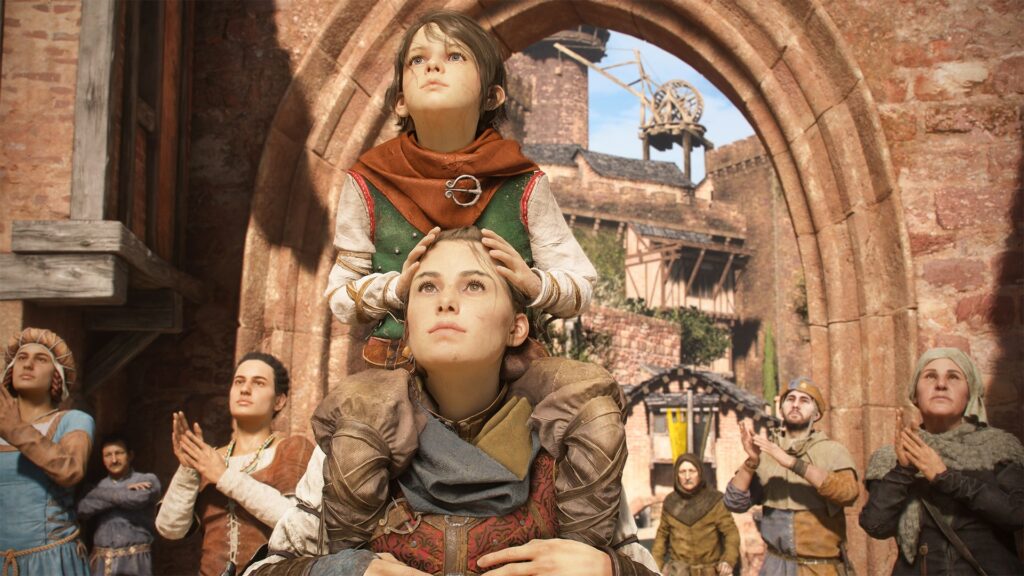The story of Amicia, Hugo, and others is a messy, painful, and bleak cap to the phenomenal A Plague Tale duology.
*Reviewed on Xbox Series X via. GamePass*
There’s very little in the way of direction that Asobo Studios could have taken when developing a sequel for A Plague Tale: Innocence. While enhancements of graphics, certain gameplay elements, and even the sheer number of rats that are ever present on the screen (a whopping 300,000 at any one moment), it also needed to double down on its story and select a destination for its tale. Innocence ended with Hugo’s disease (referred to as the “macula” temporarily subsiding) and Requiem has no problem finding a cause for its resurgence. Yet, in the process Requiem also doubles down on its storytelling, considering the implications of the first game and the impacts Innocence and Requiem have on its main two characters, Amicia and Hugo. While I would disagree with many reviews calling Requiem a pessimistic and often hopeless tale, I can’t argue against its profoundness and willingness to push its characters and gamers to the brink of desperation.
Requiem opens six months after Innocence, as Amicia, Hugo, their mother, and Lukas push forward across rural France in search of a mysterious order of alchemists who wish to understand the macula in Hugo’s blood and the abilities it gives him. It’s an opening very much reflected in Innocence, one of the beautiful medieval landscapes, childish glee, and the lurking sense that something very bad is about to happen. That something does indeed happen, and it sets its main protagonist, Amicia, and her brother Hugo, in search of a mysterious island and cure for the macula. Along the way, they meet a variety of characters, all of whom have a stake in the siblings’ tale, and all of whom shape the narrative in interesting and provoking ways. Requiem tells a tale of guilt, regret, family, and forgiveness, with each of its seventeen chapters crafting a story unlike anything in gaming’s history.
Requiem doesn’t necessarily do anything majorly new or break any moulds of games that came before it. It sticks to the 17-chapter formula established in Innocence, and by narrative standards tells a story to the likes of modern Naughty Dog games. However, in not trying to do anything remarkably new, it lets the game focus on the two key elements that define it: stealth gameplay and crafting a compelling tale.
Requiem, like Innocence is a story-driven experience through and through. As such, everything is designed around it, with plenty of motion-captured cutscenes, dialogue, and even collectibles called “souvenirs” which are little nuggets of world-building and character interactions that can only be found through exploration. Everything about Requiem wants to continue to develop its characters, exploring their relationships, their emotions, and chiefly the guilt of Amicia and the growth of Hugo. In fact, Amicia and Hugo’s relationship continues to be the backbone of Requiem, but added dimensions take shape as Amicia struggles to comprehend the ease at which she takes a life and Hugo’s realisation of the lives lost because of his disease. Both have guilt, both are forced to age at an unnatural rate, and both must face the consequences of their actions. It’s this growth and realisation that paves the way for Requiem to be as compelling and as heartbreaking as it is.
Without giving spoilers, expect Requiem’s tale to constantly push you to the edge of despair, and fear for the characters’ lives with every played moment. This fear though, trudging through the story of Requiem’s level design which is much more open and vast than Innocence, speaks to some of the improvements that went into making the sequel that it is. With more open segments that have unique paths and challenges to weave through the levels; to tighter, claustrophobic, and Crash Bandicoot-esque chase sequences; everything about Requiem‘s design feels like a progression of Innocence, building and enhancing the foundations laid in 2019.
What comes with this progression though is a change in difficulty, one that initially took some time to get used to. Requiem tirelessly wants you to be aware of the challenges its characters must face, and as such enemies feel more aware of your presence, mistakes are more deadly, and resources are more scarce. While Amicia’s inventory has adapted to new threats, the scarcity of the really useful items means that they’re in short supply, forcing you to consider whether it’s really worth using them when they could be more helpful later on.
Returning with the sequel though, is Hugo’s ability to control the rats that often backdrop many of the levels. However, the toll this takes on Hugo has changed and means he can only control the rats for so long before becoming overwhelmed. This undoes the overpowered feeling of Hugo that Innocence struggled with in its final chapters, and instead begs you to question whether now is the right time to use Hugo’s ability, or whether it may be more useful later on. It’s a sort of risk-and-reward gameplay that added a level of strategy to the stealth gameplay and continued to diversify the tricks-in-the-bag approach that one may have in tackling different levels. Because ultimately, Requiem is aware of and celebrates the different approaches gamers may have to its level design. With a new skill tree system, players’ gameplay style is monitored and characterised by the game into either “aggression”, “prudence”, or “opportunism”, rewarding certain styles the player may take with new skills in the relevant skill tree. Requiem doesn’t think one playstyle fits all, and it’s a testament to its improvements as a sequel.
So, as Requiem continues its trend in improvements on all fronts, one can’t help but fall in awe with its stunning vistas, beautifully crafted characters, and amazing world design that surrounds the story at hand. The Xbox Series X felt pushed to render the beautiful scenes that often begged to be explored, and it’s impossible not to fall in love with Asobo’s level of detail in crafting the perfect medieval France setting. It feels both new and exciting while expressing a wealth of history and beauty. Light, in particular, the glow from lanterns holding back the hoards of rats, or the refraction of prismatic shards that release a kaleidoscope of light, all feel excellently crafted. It’s only a shame then that the one let down for such a beautiful world is poor mouth tracking in cut-scenes and dodgy ADR that feels too crisp for the surreality of the world around the characters. It’s jarring; hounding the final part of the experience that sometimes pulled me from the story to the realisation that it’s “just a game”. It doesn’t hurt the narrative, but it the hounds the experience from being one that is almost perfect.
Requiem is almost perfect. It’s a story that will break your heart while trying to distill some semblance of hope while testing your strategy and stealth skills to the max. It’s a story that begs you to have your undying attention and one that I wish I could experience anew again. Here’s wondering what’s next for A Plague Tale‘s world.






